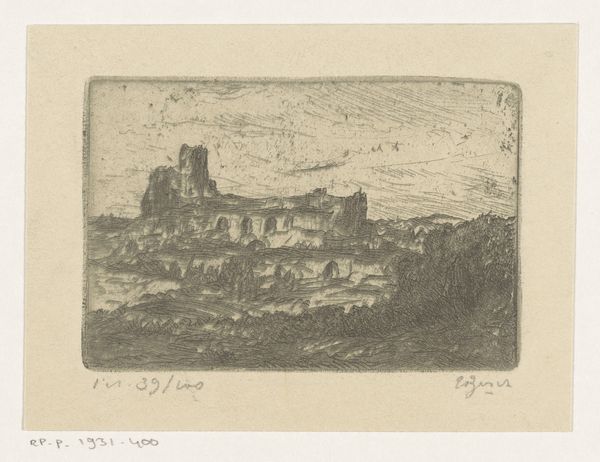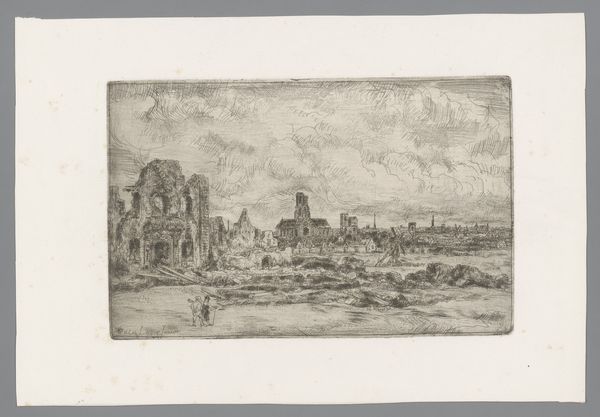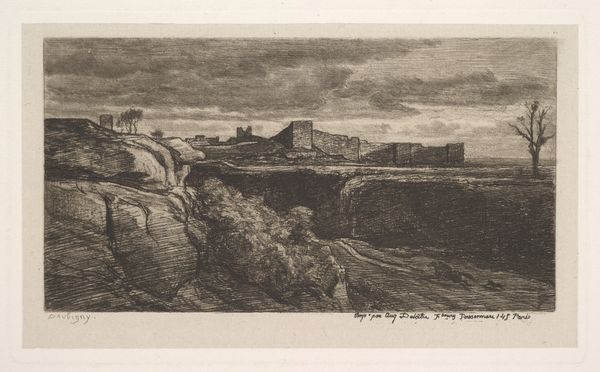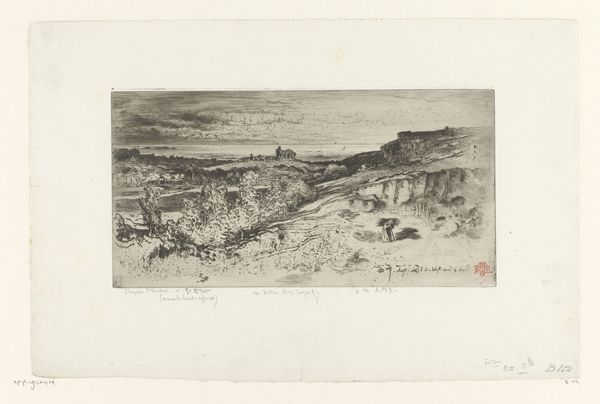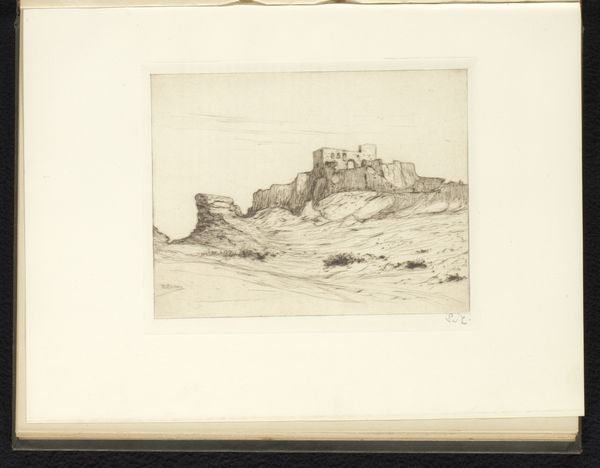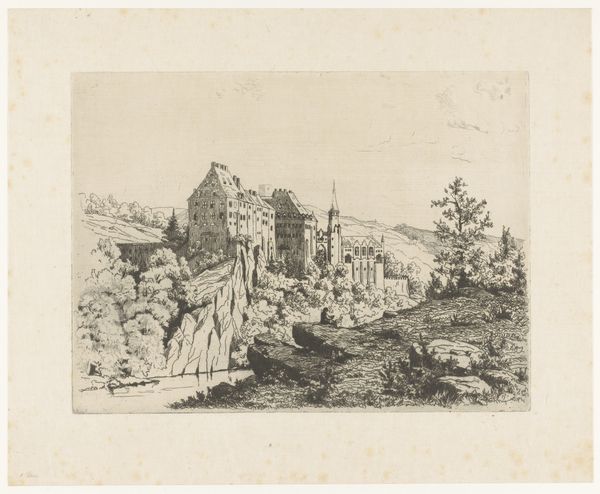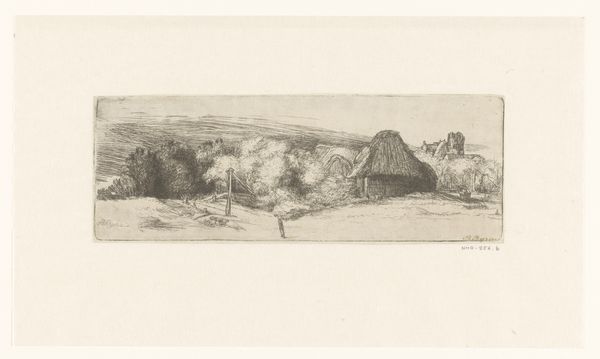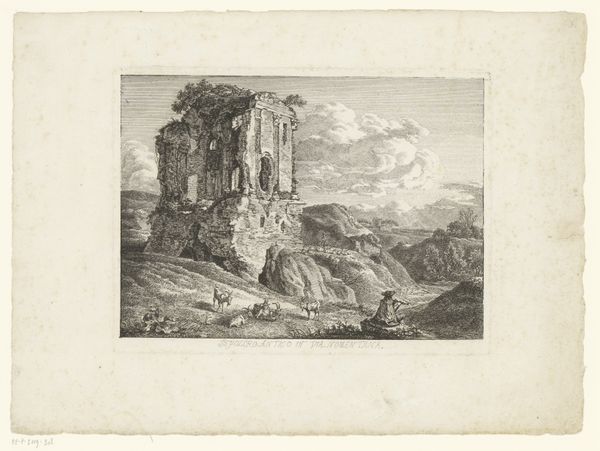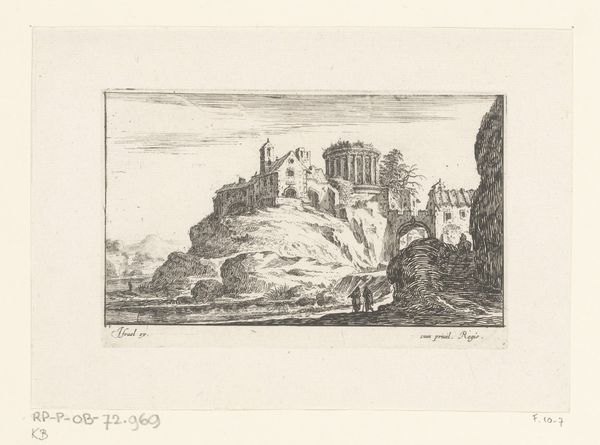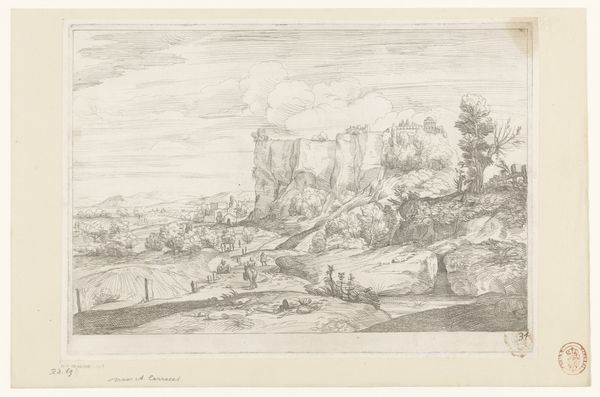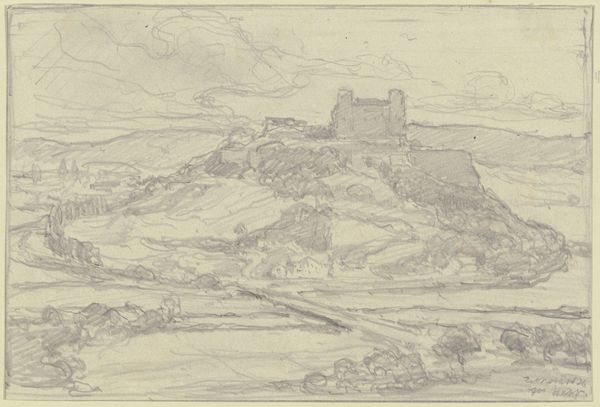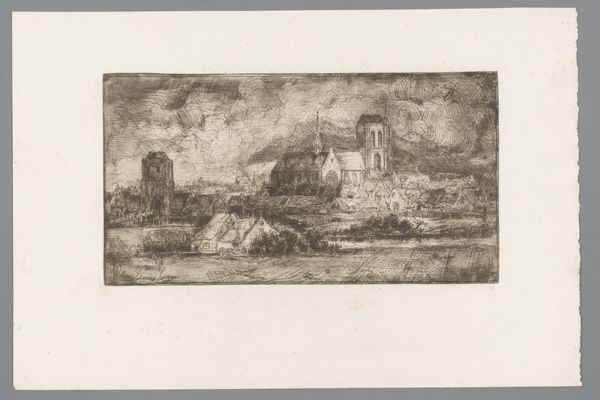
print, etching
# print
#
etching
#
pencil sketch
#
landscape
#
realism
Dimensions: height 214 mm, width 331 mm
Copyright: Rijks Museum: Open Domain
Curator: Willem Linnig the Younger created this etching titled "Kerkhof van Thuringen," sometime between 1876 and 1889. It’s part of the Rijksmuseum’s collection. Editor: My first impression is bleak, but compelling. It’s a graveyard scene rendered with incredibly fine lines; it's almost like a detailed pencil sketch rather than an etching. There's a figure, seemingly mourning, in the lower right. The mood feels somber and desolate. Curator: Indeed. Consider Linnig's mastery of the etching process, how he coaxes such intricate detail and tonal range from simple lines. What was it about this process that suited Linnig's style? Etching was often embraced as a readily reproducible medium which created commercial opportunities for artists to make money and disseminate imagery in this era. Editor: And let’s not forget the socio-political backdrop. This piece was created during a period of rapid industrialization and urbanization. How might those tumultuous changes have shaped Linnig’s vision of the landscape, and perhaps his interest in cemeteries? There’s a definite air of romanticizing ruins that speaks to broader anxieties about progress and loss. Curator: The print medium itself makes the artwork accessible to a wider audience. Rather than an oil on canvas confined to a wealthy collector's home, this image could circulate amongst different classes, prompting various engagements with death and mourning as commodities. The very act of creating prints alters how such weighty themes engage in the world. Editor: Absolutely. And consider the context of display – where was this piece exhibited, how was it received? The success of its original sale certainly reveals information on the contemporary viewer and their taste in relation to loss and devastation depicted here. Museums and galleries became essential sites for shaping public taste. Curator: It's fascinating to view the ways that Linnig exploits the potential for repeatable imagery. It highlights death's impact on the larger population beyond just individual mourning, it showcases shared societal grief and the human process of understanding loss. Editor: Yes, an intimate medium facilitating a wider discourse around profound experiences within a changing society. Thank you for sharing your insights on the social sphere involved with such a vulnerable print. Curator: Thank you for exploring this further with me through the materiality of this piece and its place within a society eager for more prints.
Comments
No comments
Be the first to comment and join the conversation on the ultimate creative platform.
